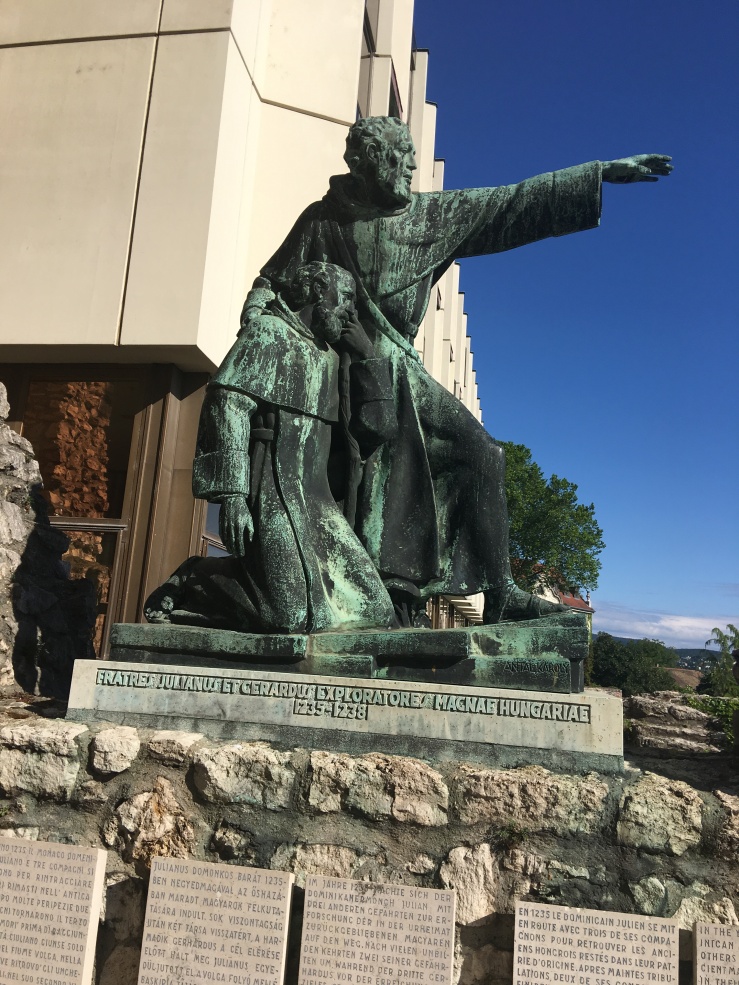Travel of course acquaints you with new places. But it also has a tendency to make you think about big ideas. In May 2017 we took a trip to Budapest to begin a week-long Viking cruise on the Danube. We reserved a two day extension with Viking and they put us up at the luxurious Hilton Budapest, which is on Castle Hill overlooking the city. This hotel is built on the remnants of an ancient Dominican monastery, and it is architecturally linked in an ingenious way with the ruins. Below is a sitting area, two corners of which are the remains of monastery arches.

There is a courtyard that serves as a venue for special events such as concerts, and it contains a monument celebrating the ancient voyage of Fr. Julianus, who with four companions went in search of the ancient Magyars who had stayed behind in the homeland. He found them on the shores of the Volga river near Bashkiria, now a part of Russia. However, on a second trip he could not find them again because they had been swept away by the Mongols. Julianus was the first European to bring back reliable information about the Mongols. The picture shows the juxtaposition of the modern and the ancient that characterizes this building.

The rooms are spacious and comfortable, the services excellent, and the location perfect for tourism. For example St. Matthias church is right next door, and Speiz, a fine restaurant, is just across the street.
What impressed me most about the design of the hotel was the notion of respect implied by integrating the old with the new. This respect for the past is an ancient virtue, as shown by the adventures of Fr. Julianus.

I enjoyed learning more about this hotel. The first time you sent the photo, the layers of the ages caught my eye right away!
It was first built in the 1970s, but recently renovared. Check hotel link to see the super modern finish of the interior. The outside is rather plain, like a lot of Communist era construction.